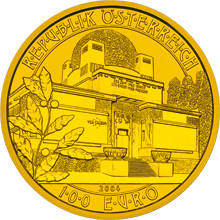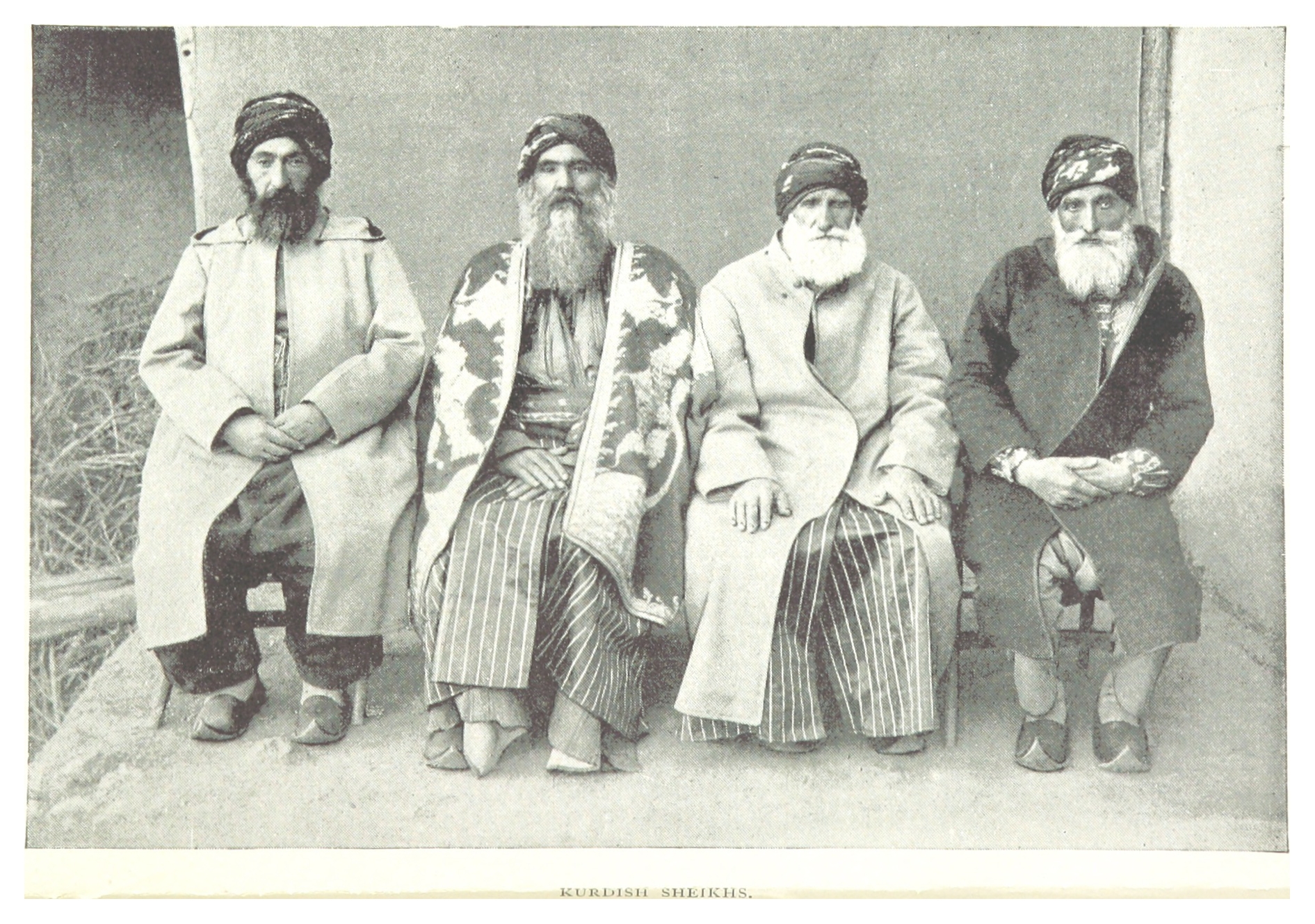|
Raimondo Tommaso D'Aronco
Raimondo Tommaso D’Aronco (1857–1932) was an Italian architect renowned for his building designs in the style of Art Nouveau. He was the chief palace architect to the Ottoman Sultan Abdülhamid II in Istanbul for 16 years. Early years D’Aronco was born 1857 in the provincial town of Gemona del Friuli, Udine, Austrian Empire into a family of builders for several generations. He completed the Gemona Arts and Trades School after the primary school. Where he was born became part of the Kingdom of Italy in 1866, when he was about nine-years-old. At the age of 14, D’Aronco attended the Johanneum Baukunde in Graz, Austria-Hungary in 1871, a school for construction famous for training skilled masons and joiners, which still exists today. Already knowledgeable after years of practical experience with his father, he proved an outstanding student, and his teachers urged him to study architecture. After his return to Italy with his resolve, D’Aronco enrolled at a summer school ... [...More Info...] [...Related Items...] OR: [Wikipedia] [Google] [Baidu] |
Raimondo DAronco
Raimondo is an Italian given name. Its English equivalent is Raymond. Notable people with the name include: * Raimondo Boucheron (1800–1876), Italian composer, chiefly of sacred music *Raimondo D'Inzeo (1925–2013), Italian show jumping rider *Raimondo del Balzo Orsini (died 1406), nobleman of the Kingdom of Naples *Raimondo delle Vigne (1330–1399), leading member of the Dominican Order *Raimondo di Sangro (1710–1771), Italian nobleman, inventor, soldier, writer and scientist * Raimondo Epifanio (1440–1482), Italian painter of the Renaissance period * Raimondo Feletti (1887–1927), Italian physician and zoologist *Raimondo Franchetti has been the name of more than one Italian baron * Raimondo Guarini (1765–1852), Italian archaeologist, epigrapher, poet, college president, and teacher * Raimondo Manzini (1668–1744), Italian painter *Raimondo Manzini (1901–1988), Catholic journalist, Christian Democratic member of Italy's Parliament *Raimondo Montecuccoli (1608–1680), ... [...More Info...] [...Related Items...] OR: [Wikipedia] [Google] [Baidu] |
Turin
Turin ( , ; ; , then ) is a city and an important business and cultural centre in northern Italy. It is the capital city of Piedmont and of the Metropolitan City of Turin, and was the first Italian capital from 1861 to 1865. The city is mainly on the western bank of the Po (river), River Po, below its Susa Valley, and is surrounded by the western Alpine arch and Superga hill. The population of the city proper is 856,745 as of 2025, while the population of the urban area is estimated by Eurostat to be 1.7 million inhabitants. The Turin metropolitan area is estimated by the OECD to have a population of 2.2 million. The city was historically a major European political centre. From 1563, it was the capital of the Duchy of Savoy, then of the Kingdom of Sardinia (1720–1861), Kingdom of Sardinia ruled by the House of Savoy, and the first capital of the Kingdom of Italy from 1861 to 1865. Turin is sometimes called "the cradle of Italian liberty" for having been the politi ... [...More Info...] [...Related Items...] OR: [Wikipedia] [Google] [Baidu] |
Vienna Secession
The Vienna Secession (; also known as the Union of Austrian Artists or ) is an art movement, closely related to Art Nouveau, that was formed in 1897 by a group of Austrian painters, graphic artists, sculptors and architects, including Josef Hoffman, Koloman Moser, Otto Wagner and Gustav Klimt. They resigned from the Association of Austrian Artists ( Vienna Künstlerhaus) in protest against its support for more traditional artistic styles. Their most influential architectural work was the Secession exhibitions hall designed by Joseph Maria Olbrich as a venue for expositions of the group. Their official magazine was called '' Ver Sacrum'' (''Sacred Spring'', in Latin), which published highly stylised and influential works of graphic art. In 1905 the group itself split, when some of the most prominent members, including Klimt, Wagner, and Hoffmann, resigned in a dispute over priorities, but it continued to function, and still functions today, from its headquarters in the ... [...More Info...] [...Related Items...] OR: [Wikipedia] [Google] [Baidu] |
Revivalism (architecture)
Architectural revivalism is the use of elements that echo the style of a Architectural style, previous architectural era that have or had fallen into disuse or abeyance between their heyday and period of revival. Revivalism, in a narrower sense, refers to the period of and movement within Western architectural history during which a succession of antecedent and reminiscent styles were taken to by architects, roughly from the mid-18th century, and which was itself succeeded by Modern architecture, Modernism around the late 19th and early 20th centuries. Notable revival styles include Neoclassical architecture (a revival of Classical architecture), and Gothic Revival architecture, Gothic Revival (a revival of Gothic architecture). Revivalism is related to Historicism (art), historicism. Western architecture of the 19th century, including Victorian architecture, is an example of Revivalism. History Mid-18th–early 20th centuries The idea that architecture might represent the glo ... [...More Info...] [...Related Items...] OR: [Wikipedia] [Google] [Baidu] |
Şeyh Zafir Türbesi
Sheikh ( , , , , ''shuyūkh'' ) is an honorific title in the Arabic language, literally meaning " elder". It commonly designates a tribal chief or a Muslim scholar. Though this title generally refers to men, there are also a small number of female sheikhs in history. The title ''Syeikha'' or ''Sheikha'' generally refers to women. In some countries, it is given as a surname to those of great knowledge in religious affairs, by a prestigious religious leader from a chain of Sufi scholars. The word is mentioned in the Qur'an in three places: verse 72 of Hud, 78 of Yusuf, and 23 of al-Qasas. A royal family member of the United Arab Emirates and some other Arab countries, also has this title, since the ruler of each emirate is also the sheikh of their tribe. Etymology and meaning The word in Arabic stems from a triliteral root connected with aging: , ''shīn-yā'-khā. The title carries the meaning leader, elder, or noble, especially in the Arabian Peninsula within the Tribes ... [...More Info...] [...Related Items...] OR: [Wikipedia] [Google] [Baidu] |
1894 Istanbul Earthquake
The 1894 Istanbul earthquake occurred in the Çınarcık Basin or Gulf of Izmit in the Sea of Marmara on 10 July at 12:24pm. The earthquake had an estimated magnitude of 7.0. At least an estimated 1,349 people were killed in towns around the Gulf of Izmit such as Yalova, Sapanca and Adapazarı, and in Ottoman Constantinople (present day Istanbul). The main shock caused a tsunami high. Background The Sea of Marmara is a pull-apart basin formed at a releasing bend in the North Anatolian Fault, a right-lateral strike-slip fault. This local zone of extension occurs where this transform boundary between the Anatolian Plate and the Eurasian plate steps northwards to the west of Izmit from the Izmit Fault to the Ganos Fault. The pattern of faults within the Sea of Marmara basin is complex but near Istanbul there is a single main fault segment with a sharp bend. To the west, the fault trends west–east and is pure strike-slip in type. To the east, the fault is NW–SE trending a ... [...More Info...] [...Related Items...] OR: [Wikipedia] [Google] [Baidu] |
Abdul Hamid II
Abdulhamid II or Abdul Hamid II (; ; 21 September 184210 February 1918) was the 34th sultan of the Ottoman Empire, from 1876 to 1909, and the last sultan to exert effective control over the fracturing state. He oversaw a Decline and modernization of the Ottoman Empire, period of decline with rebellions (particularly in the Balkans), and presided over Russo-Turkish War (1877–1878), an unsuccessful war with the Russian Empire (1877–78), the loss of Anglo-Egyptian War, Egypt, Cyprus Convention, Cyprus, Congress of Berlin, Bulgaria, Serbia, Montenegro, French conquest of Tunisia, Tunisia, and Convention of Constantinople (1881), Thessaly from Ottoman control (1877–1882), followed by a successful Greco-Turkish War (1897), war against Greece in 1897, though Ottoman gains were tempered by subsequent Western European intervention. Elevated to power in the wake of Young Ottomans, Young Ottoman 1876 Ottoman coup d'état, coups, he promulgated the Constitution of the Ottoman Empire, ... [...More Info...] [...Related Items...] OR: [Wikipedia] [Google] [Baidu] |
Rome
Rome (Italian language, Italian and , ) is the capital city and most populated (municipality) of Italy. It is also the administrative centre of the Lazio Regions of Italy, region and of the Metropolitan City of Rome. A special named with 2,746,984 residents in , Rome is the list of cities in the European Union by population within city limits, third most populous city in the European Union by population within city limits. The Metropolitan City of Rome Capital, with a population of 4,223,885 residents, is the most populous metropolitan cities of Italy, metropolitan city in Italy. Rome metropolitan area, Its metropolitan area is the third-most populous within Italy. Rome is located in the central-western portion of the Italian Peninsula, within Lazio (Latium), along the shores of the Tiber Valley. Vatican City (the smallest country in the world and headquarters of the worldwide Catholic Church under the governance of the Holy See) is an independent country inside the city boun ... [...More Info...] [...Related Items...] OR: [Wikipedia] [Google] [Baidu] |
Victor Emmanuel II
Victor Emmanuel II (; full name: ''Vittorio Emanuele Maria Alberto Eugenio Ferdinando Tommaso di Savoia''; 14 March 1820 – 9 January 1878) was King of Sardinia (also informally known as Piedmont–Sardinia) from 23 March 1849 until 17 March 1861, when he assumed the title of King of Italy and became the first king of an independent, united Italy since the 6th century, a title he held until his death in 1878. Borrowing from the old Latin title '' Pater Patriae'' of the Roman emperors, the Italians gave him the epithet of " Father of the Fatherland" (). Born in Turin as the eldest son of Charles Albert, Prince of Carignano, and Maria Theresa of Austria, Victor Emmanuel fought in the First Italian War of Independence (1848–1849) before being made King of Sardinia following his father's abdication. He appointed Camillo Benso, Count of Cavour, as his Prime Minister, and he consolidated his position by suppressing the republican left. In 1855, he sent an expeditionary corps to ... [...More Info...] [...Related Items...] OR: [Wikipedia] [Google] [Baidu] |
Camillo Boito
Camillo Boito (; 30 October 1836 – 28 June 1914) was an Italian architect and engineer, and a noted art critic, art historian and novelist. He was the brother of Arrigo Boito, the friend and librettist of the Italian composer Giuseppe Verdi. Boito was an important figure in many ways in the cultural life of Italy, and especially Milan, in the second half of the 19th century. He not only taught at the Brera Academy and the Istituto tecnico superiore for nearly 50 years but also took part in competitions (both as competitor and adjudicator), wrote articles on architecture and restoration for newspapers and periodicals, as well as numerous reports for private individuals and the government, and was active in numerous professional associations. He also served on numerous commissions, particularly after his appointment as Director of the Brera Academy in 1897. Biography Training and architectural career Boito was born in Rome, the son of an Italian painter of miniatures. His mo ... [...More Info...] [...Related Items...] OR: [Wikipedia] [Google] [Baidu] |







